Our Planet Needs Your Help... Your Own Backyard is a Good Place to Start!
Have you ever thought about the world’s land-fill problems? Have you wondered what will happen when the landfill fills up, or are you concerned about the pollution our garbage creates?
"I am the vine, you are the branches. He who abides in Me, and I in him, bears much fruit; for without Me you can do nothing.” - John 15:5
Kids Stuff
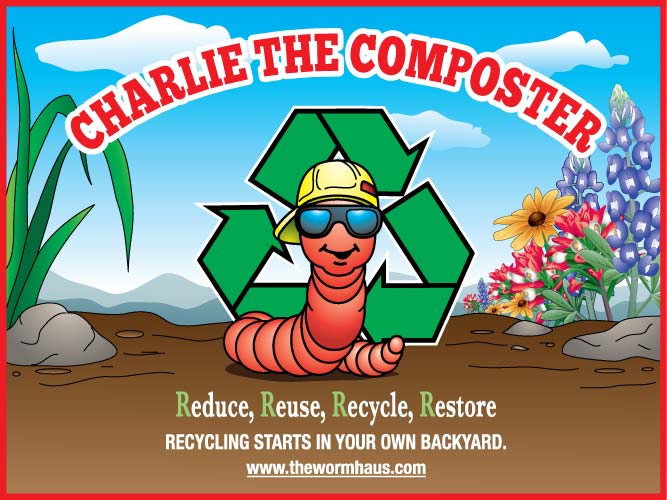
Hey kids! I’m Charlie the Composter. Let’s take a look at my body and learn a little on how do things in your bin and in Mother Nature. (It’s so beautiful out here!)
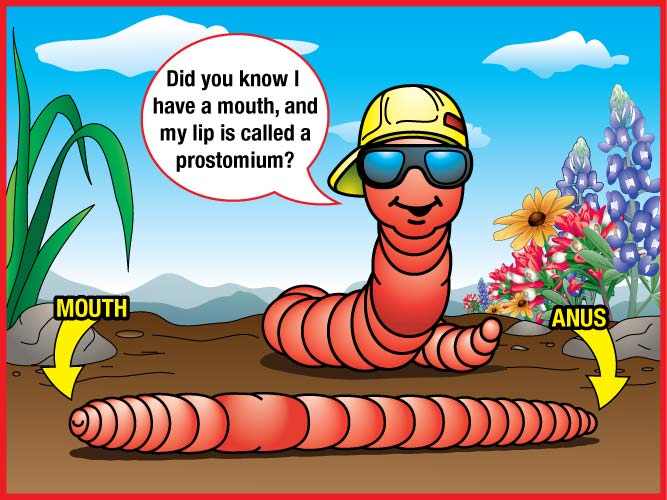
At the very tip of my head (that's know as the anterior end of my body), you will see a flap of skin that hangs over my mouth. It is called the prostomium. It keeps stuff I don't like from getting into my mouth. (Yeah, some things are even gross to worms). It is kind of like your upper lip. Right under the prostomium is my mouth—you know what that's for? I have a pretty big mouth for a worm. It's big enough to grab a leaf and drag it around.(I’m pretty strong for my size.)
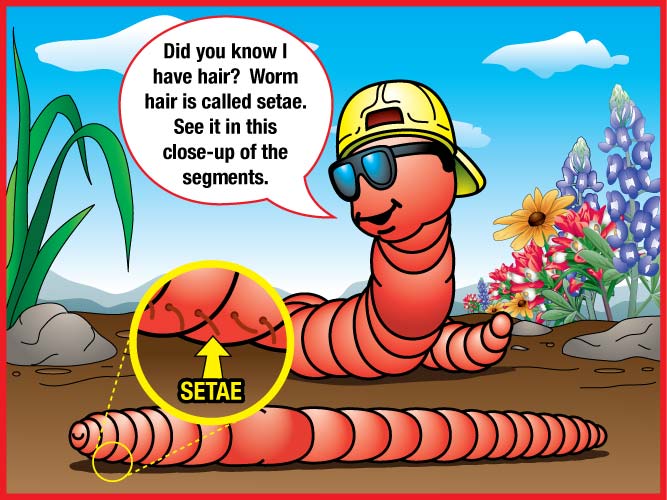
If you look at my body under a magnifying glass, you will see a lot of little rings across my entire body, looks a lot like a bunch of rings connected together. These rings are called segments. When I am all grown up, I will have 120-170 segments. On the first segment is my mouth and on the last segment is my anus—sort of like the beginning and the end.
If you had a microscope and looked really, really close at each segment, you will see something that looks like a bunch of small hairs or bristles. (You thought worms were bald, didn’t you?) These bristles are called setae (pronounced see-tee) and they help me move. I have four pairs of setae on each ring or each segment of my body.
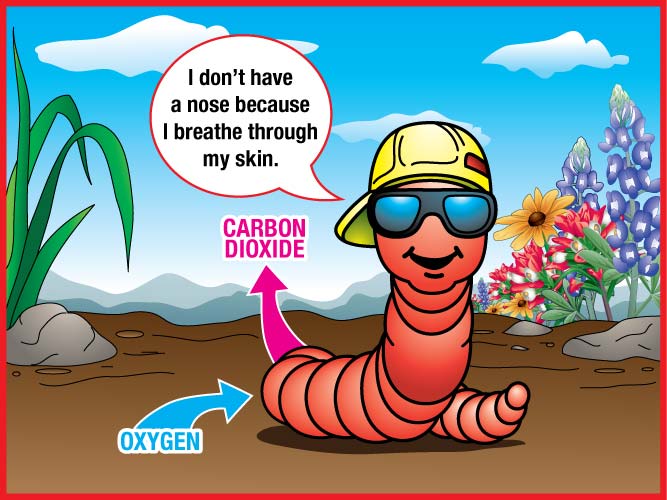
If you get a chance to feel me, you should notice that I am a little bit wet or slimy. It doesn't mean I need a shower, my skin is supposed to feel like that. I need moisture to survive.
Have you ever wondered how I breathe without a nose or lungs? You breathe through your lungs. Your lungs take in oxygen and give off carbon dioxide.
Worms do not have lungs but I breathe through my skin. I take in oxygen through my skin and it goes right into my bloodstream. My skin must stay wet in order for the oxygen to pass through it. If I get too much water I will drown. Just keep me damp, moist and slimy. If the water has lots of air in it (oxygen), I can stay under for a long period of time and still live.
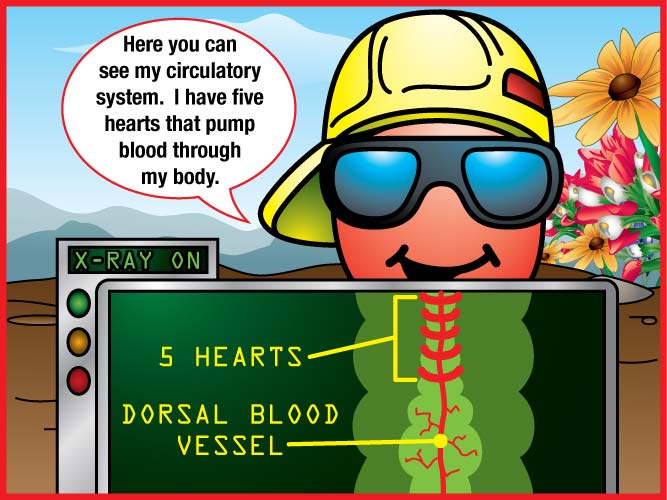
Guess what? I have five hearts! All of these hearts pump blood through my blood vessels just like your one heart. (With that may hearts, I have lots of love to give!)
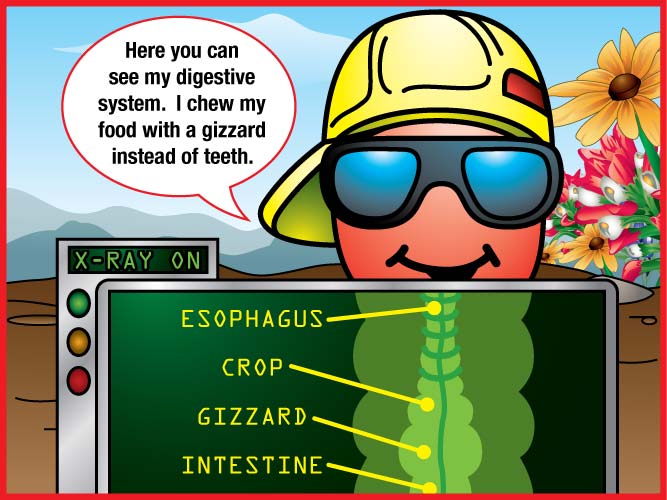
My mouth is very small. So I can only eat very tiny things like bacteria, fungi and protozoa which you couldn't see unless you are looking through a microscope. I also eat organic matter like plants (yummy, salad) and decaying animals. I guess that sounds sort of yucky, but you humans eat dead animals and birds too.
Sometimes the bits of food are too big for my mouth, so I moisten them to make them soft and suck them right into my mouth.
Since I have no teeth, I cannot really chew my food like you do. I have something inside of me close to my mouth called a gizzard. You might have heard this word before because birds, including chickens and turkeys, have a gizzard almost like mine. As I eat my food some grains of sand and soil get into my gizzard. These grains of sand and soil push against each other, mix with moisture and grind the food into tiny pieces (kind of like my own personal food processor).
When the food leaves my gizzard, it goes into my intestine. The food is dissolved there and absorbed into my blood that is pumped by my five hearts. Then it is carried to all parts of my body to keep me strong, healthy and slimy.
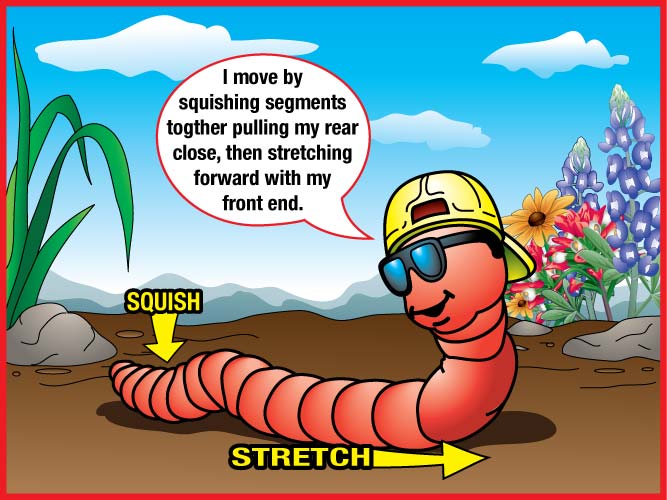
It takes a lot of work to get where I want to go. I don't move very quickly, but think about how fast you would go if you had to slide around on your stomach.
I use some of my muscles and my setae (bristles, remember). My setae act like the brakes on a car, helping me to slow down or stop. I have muscles that go in circles around my body and other muscles that run the length of my body.
Actually, I'm pretty well-built, if I do say so myself. When my circular muscles tighten up, my body becomes thinner and longer. Sort of like a tug of war contest.
(Now let me take a minute to rest for a second, whew! Now where were we ... oh, yeah, moving right along, stretch- squish.)
This movement by my circular muscles squeezes my front end forward. My other long muscles squeeze together and help move the rear end of my body towards the front end. So this is how I move forwards and backwards. Pretty slick!
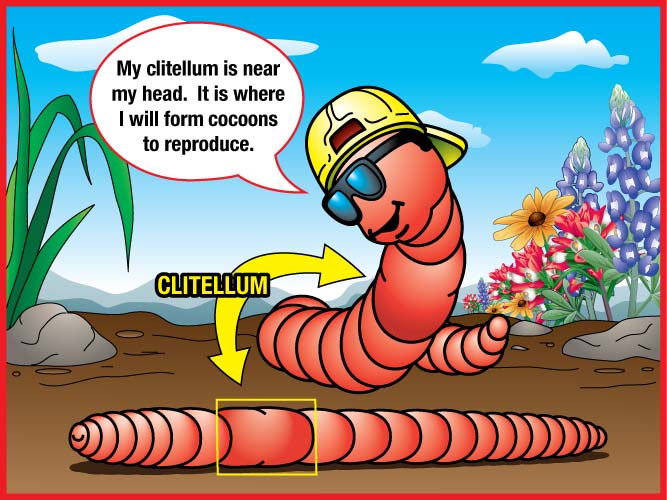
My clitellum is the light-colored band near my anterior (head) end that forms when I am about 4 to 6 weeks old. It has both male and female reproductive organs. (That means I am neither a boy nor a girl, I am both).
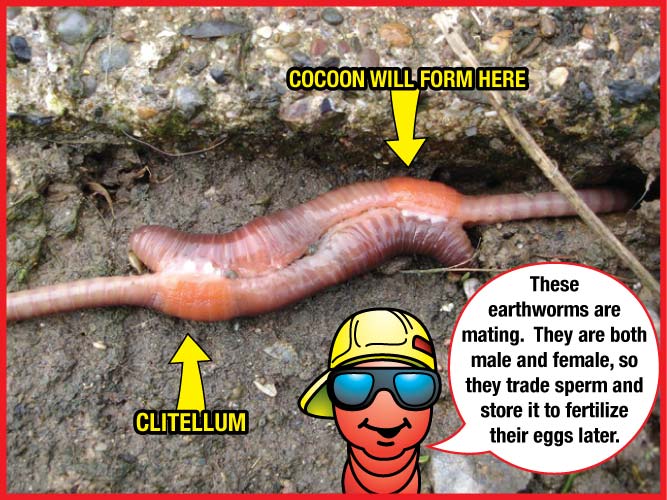
This is my clitellum. My clitellum will someday help to form cocoons. New baby worms will hatch from the cocoons and I will have a family.
Another worm and I join together with heads pointing in opposite directions so we can mate. Sperm is passed from one worm to the other and stored in sacs. Then a cocoon forms on each of us on our clitellum. As we back out of the narrowing cocoons, eggs and sperm are deposited in the cocoon.
After we back out, the cocoon closes and fertilization takes place. The cocoons are much smaller than a grain of rice and are yellow-colored. Each cocoon can have 1-5 worms. If conditions are not right for hatching, such as dryness, my cocoons can be dormant for years and hatch when conditions are right.
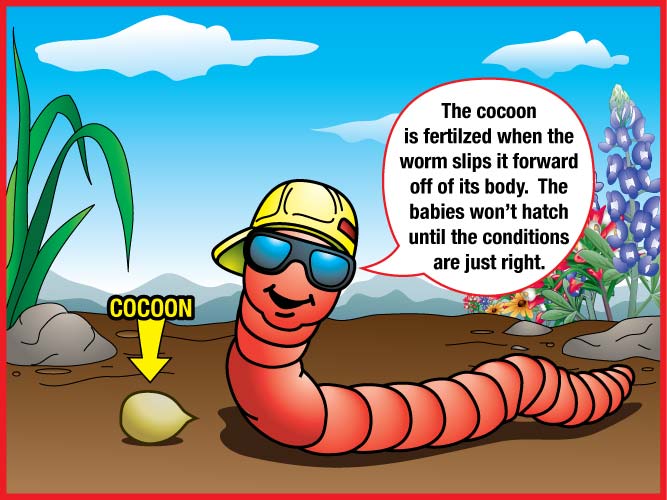
My babies will hatch in 2-3 weeks. The new baby worms are whitish, and you can practically see through them (but I think they are beautiful, just like any parent). My babies are only 1/2 to one inch long. They are on their own as soon as they are born. In about six weeks, they will produce their own baby worms. I'll be a grandparent (yea) and the cycle starts all over again.
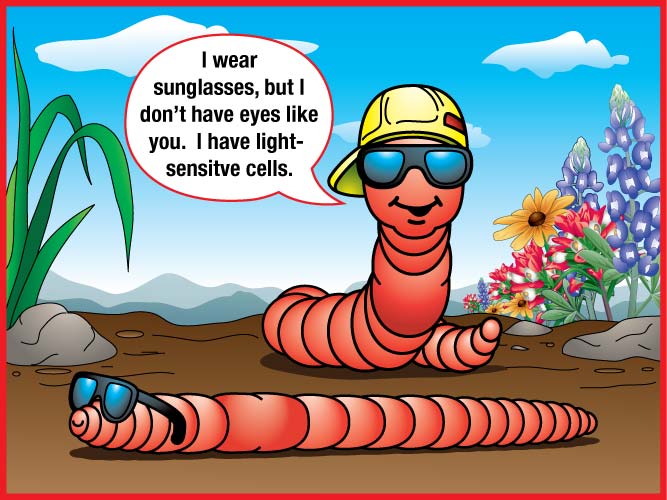
I can tell the difference between light and dark, pretty good for someone who does not have eyes. I have cells in the front part of my body (anterior end) that is sensitive to light. This is called light sensitivity. That’s why you don’t see me during the day or on top of my bedding in the bin.(Pretty kool shades, right?) Well, gotta go. Have to find something to eat.
